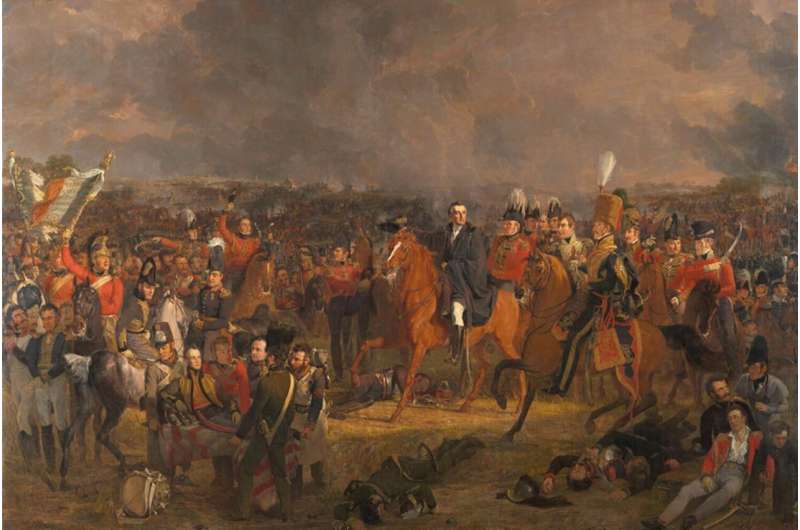
The bones of fallen Battle of Waterloo soldiers may have been used asfertilizer.
The conclusion that a new study suggests is most probable is that very few human remains have been found from what was such a bloody affair.
The peer-reviewed Journal of Conflict Archaeology published Professor Tony Pollard's findings today, exactly 207 years after the historic conflict began.
The Director of the Center for Battlefield Archaeology at the University of Glasgow shows the data from new battlefield descriptions and drawings made by people who visited in the days and weeks after Napoleon's defeat.
James Ker, a Scottish merchant who lived in Brussels at the time of the battle, wrote letters and personal memoirs about his experiences. The visitor accounts detail the locations of three mass graves.
Will the new data lead to the discovery of the long- lost bones of those who died in this battle? Professor Pollard doesn't think it is likely.
It is surprising that there is no reliable record of a mass grave ever being encountered because the bodies of the dead were clearly dumped at many locations across the battlefield.
The importation of human bones from European battlefields was mentioned in at least three newspaper articles.
European battlefields may have provided a convenient source of bone that could be ground down into bone meal. The British Isles were one of the main markets for this raw material.
As the gun smoke cleared, Waterloo attracted visitors. Many people came to steal the belongings of the dead, some even stole teeth to make dentures.
It's possible that an agent of a bone seller would arrive at the battlefield with high expectations of securing their prize. Mass graves have enough bodies in them to merit the effort of digging them up.
Local people would have been able to point these agents to the locations of the mass graves, as many of them would have vivid memories of the burials. It's1-65561-65561-65561-65561-65561-65561-65561-65561-65561-65561-65561-65561-65561-65561-65561-65561-65561-65561-65561-65561-65561-65561-65561-65561-65561-65561-65561-65561-65561-65561-65561-65561-65561-65561-65561-65561-65561-65561-65561-65561-65561-65561-65561-65561-65561-65561-65561-65561-65561-65561-65561-65561-65561-65561-6556
The emptying of mass graves at Waterloo in order to get bones seems feasible on the basis of these accounts.
To determine once and for all, as part of his role as the Lead Academic and an Archaeological Director at the charity Waterloo Uncovered, Professor Pollard will help to lead an "ambitious" survey involving veterans who will join the dig to provide insight to world. They get care and recover.
Pollard states that the next stage is to head back out to Waterloo to attempt to plot grave sites from the analysis of early visitor accounts.
If human remains have been removed on the scale proposed, there should be archaeological evidence of the pits from which they were taken.
We will be covering large areas of the battlefield over the coming years and will look to identify areas of previous ground disturbance to test the results of the source review and distribution map.
It would be very rare for the team to find anything.
A human skeleton was found during the construction of a new museum and car park. The leg bones were found in an excavation of the main allied field hospital. The museum in Waterloo has a skeleton that is not certain of its origin.
There have never been any other significant remains discovered.
More information: These Spots of Excavation Tell: Using Early Visitor Accounts to Map the Missing Graves of Waterloo, Journal of Conflict Archaeology (2022). DOI: 10.1080/15740773.2021.2051895